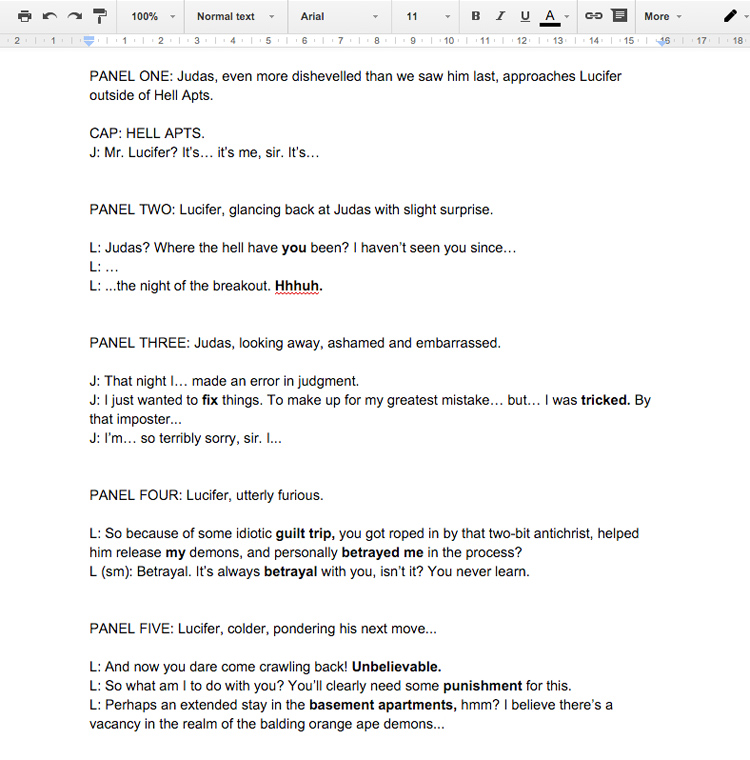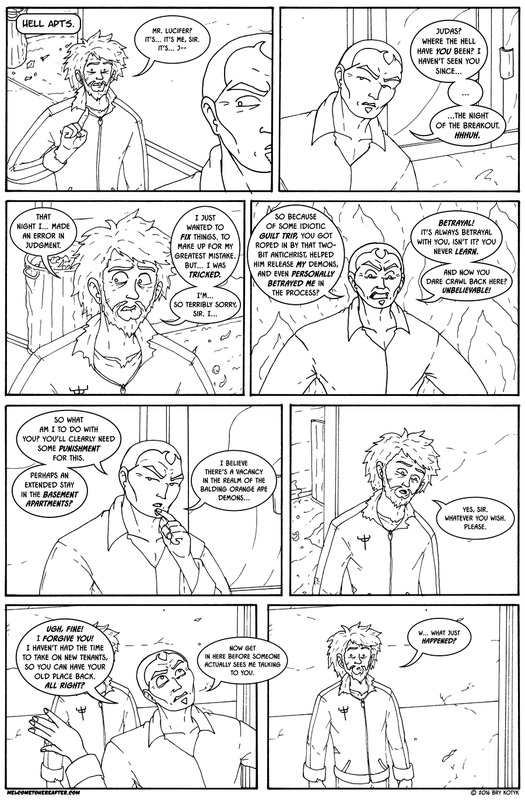Guest post by Bry Kotyk from "Welcome to Hereafter" Our second guest blog by one of our Write NOWW: Web Compositions panelists. Today's post is from Bry Kotyk from Welcome to Hereafter: www.welcometohereafter.com Write NOWW: Web Compositions Friday, March 18th, 7pm CommuniTea & Coffee 108 Frederica St. E Comics were a learn-by-doing exercise for me. Outside of some high school art classes, and countless hours of doodling during all of my other non-art classes, I never really studied drawing in a formal way. I always thought of myself as a writer, and I pursued that creative drive in some filmmaking, blogging, and scripting over the years. I had an image of myself writing movies and creating animated series, and when that path proved much more difficult than my naive, younger self realized, I figured out that the best outlet to give my ideas some kind of form was my childhood “first love”: comics. The beauty of comics is that you’re only limited by what you can do with your own hands. The beauty of the Internet is that anyone can have a voice and put their work out there for all to see without a lot of expense. (And there are more webcomics than you could count online for that very reason!) So six years ago, I finally started work on a long-brewing idea: “Welcome to Hereafter,” sitcom-ish ongoing series about all the world’s gods, deities, and demons living together in a contemporary afterlife-city called Hereafter, with the world’s religions represented as corporations that trade in souls rather than shares. The story begins when God loses his job, and things spun out from there. Since then, there have been hundreds of pages online (nearly three books’ worth and counting), a recent self-published print volume, and, I hope, some serious improvement. And now, a quick run-down of how a typical page of the comic goes from idea to digital reality: This is my version of a script: bare-bones. I’m collaborating with myself, so thankfully it’s usually pretty easy to guess my own visual intent. Usually. I’ll share a secret with you: I don’t always write scripts ahead of time. That probably sounds bad! But creating comics, for me at least, begins visually. An idea for a page will brew, and all too often, whenever it’s done, it’ll just pop into my head fully formed — and often while I’m out walking my dog or having a shower or driving to work, unable to write anything down. The visuals stick in my memory more than the words do, but the process of drawing the page will often bring out better dialogue as it all comes together. I’ve learned that everyone’s method is different, so I’m going to be very kind to myself and call this my “method.” I do try to plan out my panelling first, though. The most recent comic is a pretty straightforward example, with eight panels of varying sizes making up the page. I also draw purely traditional, which less and less comic creators do these days. I can’t explain why, but the idea of drawing digitally scares me a little. Then there’s the fun part: pencilling. I draw with a light blue mechanical pencil — non-photo blue — that gets completely edited out of the final product. So in this stage I get to be as rough and sloppy as I want to be, drawing poses and expressions, hating them, erasing them, and drawing new ones in their place. (This tends to repeat a few times.) And next, the sheer terror called inking. This was probably my longest learning process, and also the easiest to screw up. Corrective fluid and tape have saved me more times than I’d like to admit. Look closely and you’ll see some on this very page! Finally, I go digital. Which means scanning the 11x17” page in bits and pieces on my standard-size scanner, then cobbling them all back together. I publish the comic in pure black-and-white (at least partially because colouring is a very time-consuming process and, y’know, creators tend to have day jobs), so it’s a simple matter of editing out the blue pencil lines and adjusting the levels of the black inks and the white page to the ideal contrast. Digital lettering is the last step, and then it’s ready to be resized and posted online. And that’s how a self-taught amateur web-cartoonist gets it done. Just repeat this process 379 times (and counting).
0 Comments
Your comment will be posted after it is approved.
Leave a Reply. |
NOWW Writers
Welcome to our NOWW Blog, made up of a collection of stories, reviews and articles written by our NOWW Members. |
Proudly powered by Weebly







 RSS Feed
RSS Feed